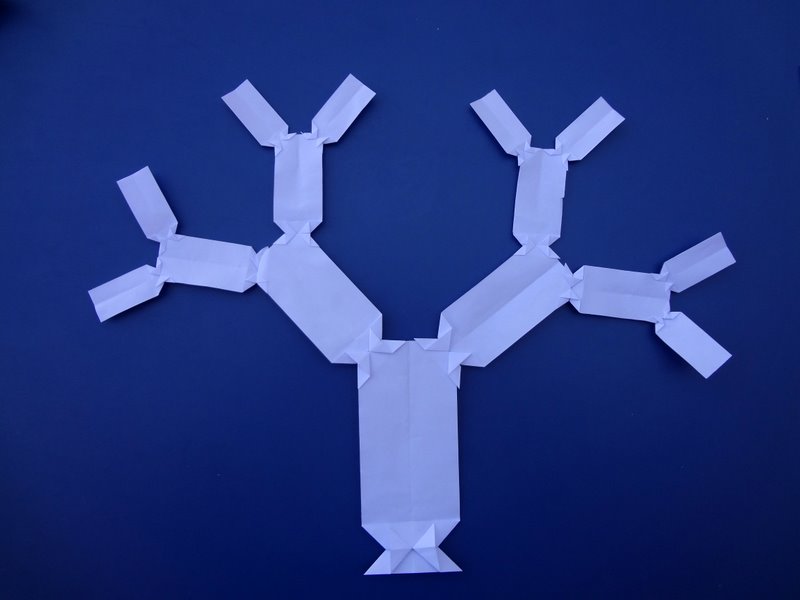Here’s another great idea I got from the Bridges Math and Art conference: fractal origami. Check out this folded version of Pythagoras’s Tree.
Apparently, the dimensions of A1 paper are such that if you cut the rectangle in half, parallel to the shorter side, the result will be two rectangles that are roughly similar to the original. This self-similarity allows you to repeat the cutting and folding process, producing smaller and smaller branches.
Have more Fun With Folding!







